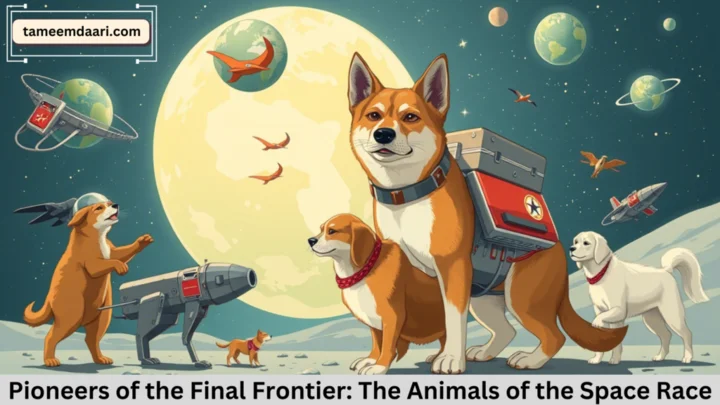The Space Race (1957–1975) wasn’t just a rivalry between the U.S. and USSR—it was a saga of scientific ambition, political one-upmanship, and unexpected heroes. Pioneers of the Final Frontier: The Animals of the Space Race Before humans ventured beyond Earth, animals were the trailblazers, enduring perilous missions to test the feasibility of life in space. From fruit flies to dogs and chimpanzees, these creatures played a vital role in shaping space exploration. This article delves into their stories, sacrifices, and lasting legacies.
Why Animals? The Science Behind Space Experiments
Animals were chosen as “bioastronauts” to study the biological effects of space travel. Scientists sought answers to critical questions:
- Could organisms survive launch, microgravity, and radiation?
- How would prolonged weightlessness impact vital functions?
- Were re-entry and recovery possible?
Mice, dogs, and primates—animals with biological similarities to humans—became test subjects. Their missions provided data that safeguarded future human astronauts.
The First Animals in Space: A Timeline
Fruit Flies (1947): The Unlikely Pioneers
Mission: The U.S. launched fruit flies aboard a V2 rocket in 1947, reaching 68 miles altitude.
Purpose: To study radiation exposure in high-altitude environments.
Outcome: The flies survived, proving organisms could withstand suborbital flight.
Laika the Dog (1957): The Sacrifice That Shocked the World
Mission: The USSR’s Sputnik 2 (1957) carried Laika, a stray Moscow dog, becoming the first animal in orbit.
Purpose: Test survivability in prolonged microgravity.
Outcome: Laika died within hours from overheating, sparking global ethical debates. Her mission revealed the challenges of life support systems.
Monkeys and Chimps: America’s Primate Astronauts
- Albert II (1949): First monkey in space (V2 rocket); died on impact due to parachute failure.
- Ham the Chimp (1961): Survived a 16-minute suborbital flight, proving complex tasks could be performed in space.
- Enos (1961): Orbited Earth twice, paving the way for John Glenn’s historic flight.
Belka and Strelka (1960): The Soviet Canine Heroes
Mission: These dogs orbited Earth for a day aboard Sputnik 5 alongside mice, rats, and plants.
Outcome: All survived, marking the first successful return of living organisms from orbit. Their success directly enabled Yuri Gagarin’s 1961 voyage.
France’s Felix the Cat (1963)
Mission: France launched Felix (later revealed to be female cat Félicette) into suborbital space.
Outcome: Félicette survived, providing neurological data. Often overlooked, she remains a symbol of France’s space contributions.
Tortoises Around the Moon (1968): USSR’s Zond 5 Mission
Mission: The USSR sent two steppe tortoises on a lunar flyby.
Outcome: Survived despite weight loss, proving long-duration missions were possible.
Ethical Controversies: Sacrifice vs. Science
Animal space missions sparked ethical dilemmas:
- Laika’s Fate: No survival plan existed for her mission, igniting protests.
- Public Outcry: Photos of dogs in cramped capsules and reports of primate deaths fueled criticism.
- Regulatory Shifts: By the 1970s, agencies adopted stricter welfare guidelines, prioritizing animal survival.
Legacy of the Space Animals
- Human Spaceflight: Data from animal missions informed life support, nutrition, and re-entry protocols.
- Veterinary Advances: Monitoring technologies developed for space animals revolutionized veterinary medicine.
- Cultural Icons: Laika, Ham, and Belka/Strelka became symbols of courage, appearing in films, stamps, and monuments.
Conclusion: Honoring the Unsung Heroes
The animals of the Space Race were more than test subjects—they were pioneers. Their sacrifices answered existential questions about survival beyond Earth, enabling milestones like the Apollo moon landings and the ISS. Today, as we explore Mars and deeper space, their legacy endures in ethical guidelines and our collective memory.
